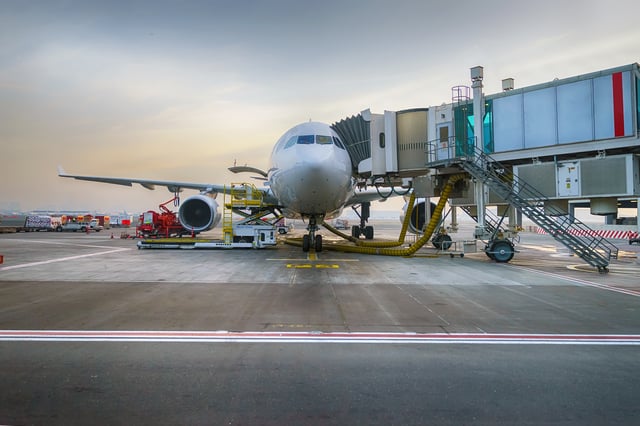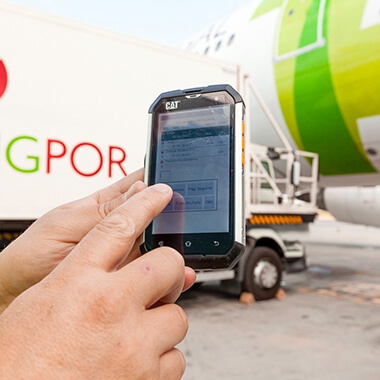Airline Catering is, hands down, the single most difficult business in the world. And very few people realize it. It’s just putting some food on an aircraft, how hard can it be, really? Well, it’s much more than that and, given the astonishing pressure exerted by airlines trying to come up with better customer service for lower costs, this is nothing less than a vital piece on one of the most critical businesses in the world. What are the 5 do or die challenges airline catering businesses are facing and how can you learn from them, even if you’re not on that complex industry?
Airline Catering has specific constraints, imposed by business and regulatory compliance, that makes it particularly challenging. It’s not just food safety and security regulations, it’s being able to comply with last minute requests up until 15 minutes before aircraft departure, short turnaround times, aircraft changes, delays and airport operational limitations, always pressed to deliver on time and according to customer specifications. And we're talking about a business that has to accurately load, in a medium sized operation, an average of half a million items per day and operate in peak lifecycles: on an hour you will be forced to deliver up to 35% of your entire daily operation. This is a serious business, with massive volumes and mad service requirements. But that’s what makes it so vital for airlines and that’s why you need perfection in details to deliver according to expectations.
This alone is the perfect storm scenario. But it just keeps getting better, as airlines fight fiercely to improve passenger experience, increase price competitiveness, optimize operational costs and extend their reach onto more destinations and larger customer bases. All of this is translated into five immediate, short to medium term challenges that put Airline Catering companies in a very difficult spot. Let’s check them out:
-
Provide support to innovative services to passengers and comply with hybrid operational scenarios, where different service strategies are used on the same flight to improve high value customer service perception and increase price competitiveness. This means, on one hand, that airlines are looking to use disruptive marketing opportunities to increase passenger service perception and, on the other hand, to be able to provide a wider price offering in the same flight, looking to keep high value customers that require high level services and attract lower rate passengers, by establishing tier-based complimentary on board services. As examples, meal pre-selection, meal pre-order and mixed Buy on Board / complimentary catering are on-going strategies that require a different operational approach on critical catering activities, from service and galley planning, to procurement and production planning, to preparation and consumption control.
-
Dramatically increase operational flexibility across the entire process, so that service change requests are handled much faster and with top level quality. We are talking about providing spot menu changes to comply with marketing initiatives in under 3 days, covering everything from menu design and costing, to procurement and production. We are talking about changing onboard service definition, from design and planning to preparation and loading with less than a 24-hour lead time. This allows airlines to provide differentiated offerings to passengers and increase service innovation to passengers, that translates in recurrence and more sales.
-
Improve the efficiency of operational activities to help airlines reduce costs and handle irregularities. This means that all activities tied to aircraft preparation will have to be dramatically more efficient, in order to comply with much shorter turnaround times, shorter last minute lead times, shorter aircraft change handling windows and even shorter order close lead times. And decreasing service quality is just not an option, instead you will have to increase it, do it in less time and respond much faster to unforeseen events.
-
Integrate airline supply chain optimization initiatives, in order to reduce stock levels and improve consumption forecasting. Airlines are looking into managing their resources more efficiently and they need caterers to be a part of the process, by providing accurate information about consumptions and stocks in useful timeframes, while exerting far better control over airline resources under their management. And this is just not about trolleys, we’re talking everything from spoons and toothpicks to wine and other high value items. And this means millions of dollars of savings for the airlines, savings that will be pursued relentlessly regardless of the effort required by the catering companies to provide this information and control.
-
Provide accurate, real time information about flight related operational activities in order to reduce delays and allow preventive actions to take place, effectively targeting the dramatic reduction of non-technical related delay issues. This means airlines and airports are looking for knowing exactly how the catering and dressing activities are performing in real time, up to the point of forecasting if a delay will be likely or not, in order to take preemptive measures and mitigate that risk. Furthermore, airlines want to get actual, real life information on the aircraft exact preparation process, so that crews know inside the aircraft if something is missing or if some item has been replaced by an alternative. And this besides having allergen and menu composition information, based on the actual meal component preparation and not on the “standard” menu design.
This amounts to a gigantic endeavor for airline catering companies, that need to engage on a radical different strategy to be able to beat these challenges. You need to be flexible, dynamic, striving constantly to improve efficiency, agile in adapting to change and assure you are auditable. This without compromising quality and looking to reduce your operational costs. So, what do you need to conjure to live up to these challenges?

The first thing is to recognize that you no longer can consider production as your only mission critical activity. Yes, production planning and control at the kitchen level is important, but it only takes you so far. There are far more processes before and after the kitchen that are as important as production. In fact, you will only be able to produce efficiently if a large set of requirements before and after are met. Why? Because production needs to know what to produce, and that depends on changing menu specifications, highly volatile meal requests (remember pre order, up until 15 minutes before departure?) and dynamic TSU operations (don’t forget that service configurations change daily). Relying on static, rigid planning and control structures is going to drive you into the wall.
The second thing is to understand that all processes need to work together in order to assure sustainable and efficient operation. You can no longer consider menu design as a costing issue. It is a quality, production, procurement and costing issue and the menu design process requires agile tools that combine information and provide efficient analysis to assure that you are actually able to deliver at the right cost the required components. You can no longer consider trolley preparation a physical, separate activity that bundles materials repetitively. The preparation process is integrated on a changing, on going activity, that must expose the status of preparation to understand if all is good on the available timeframe or not. It must get instant notifications about dynamic aircraft preparation changes (load factor dependent service configurations, for instance) and it must adapt to daily service changes. So it needs to be fully linked to service engineering, demand management and operations control. Only by having a fluid, interconnected, process-aware operation you’ll be able to achieve sustainable efficiency.
Then, you need to be prepared to work with real time information. This means that not only you need to react to events as they happen (aircraft change, up count, pre order request, menu approval, you name it) but you also need to be able to track down your operation instantly. It’s by knowing exactly what is going on, may it be events that demand that you change what you’re doing or events that tell you that something has been done, that you are able to understand if you’re going to meet the deadline or not. And take preemptive, corrective action, to prevent problems from appearing. This means that you need to be connected to every possible source of information, from customer and airport systems, to mobile devices and other identification systems (like RFId or barcodes) to get the information as it is available. And you need process control dashboards that give you simple, on the spot information to take decisive actions and avert failure.

Another thing that you need to consider is that lead times are getting much shorter and that changes are happening much more often. This means that you can no longer rely on advanced, stable information to plan your operation, from procurement to production. What can you do, if you don’t know what’s going to happen? Well, you must rely on predictive forecasting to deliver you highly reliable numbers and, very important, dynamic requirement generation to adapt to changes as they happen. These advanced techniques, based on distributed computing and highly efficient statistical models, use events triggered in real time to constantly make reliable predictions about how many passengers each flight is going to board and adjust your requirements as numbers, service and menu design changes happen. Real time, dynamic MRP, this is the critical cornerstone that will allow you to plan effectively and reduce your costs.
Finally, you need to assure that everything you do is auditable. It boils down to knowing who did what when. And you need this information not only to address root cause analysis strategies but also to provide a solid basis for dispute resolution when problems appear.
This process-aware, operations-oriented, agile and dynamic approach will enable you to respond to these challenges and build a sustainable operation that will endure the tough test of evolution. And this is a vital thing to do, because if we can anticipate these challenges, it just means that there are bigger ones to come that we cannot foresee at this time. And the best approach to that uncertainty is to prepare now to be as agile and as dynamic as possible to assure we will adapt to different challenges as they happen.
Cateringpor, a joint venture between TAP and LSG SkyChefs that operates one of Europe’s biggest airline catering facilities, adopted this strategy and implemented our O2P-based Catering Solution, with some remarkable results. Deploying a pre selection meal request demand from one of their customers was done without any modification in the operational processes, just by changing the meal plan, menu design, demand management processing real time rules and predictive forecasting rules. Zero impact in operational efficiency, zero impact in production costs, zero mistakes from day one. Flexibility, agility and process focus assured that a critical request was handled without impacts and that operations supported the customer evolving vision. This is something that isn’t certainly painless to implement but it is a tried and tested solution that has been proven over and over again to provide you with the level of resilience required to have a future proof, sustainable operation.
You can read more about this solution and what it can deliver to catering operations here.
Also, you can download for free our E-Book: Become the gold Standard in Airline Catering.
